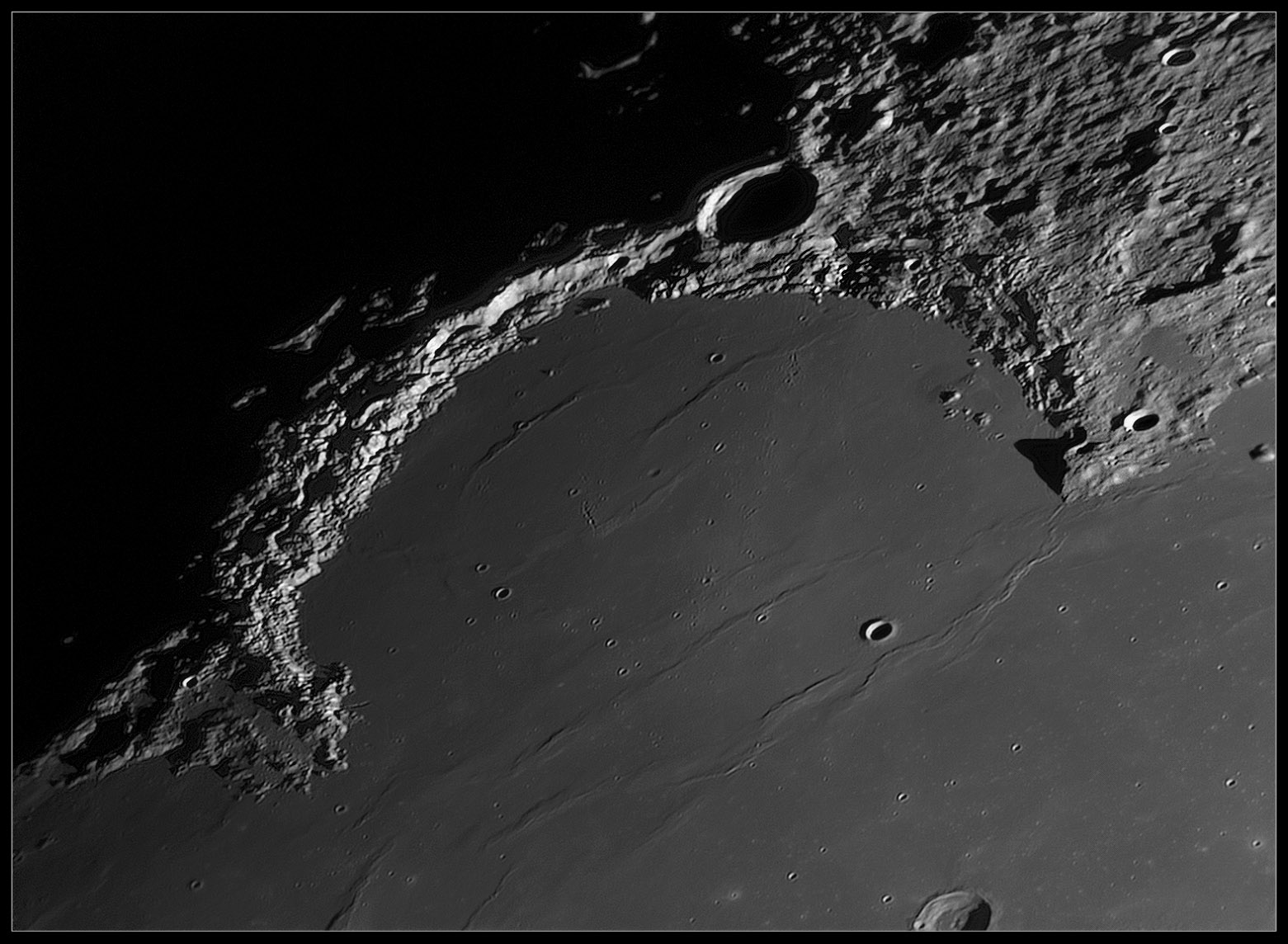February 13, 2024
Details
Originally published January 27, 2014

image by Damian Peach
This is a beautiful image. Despite the dramatic lighting that picks out every change of slope of the Jura Mountains crater rim, I am immediately attracted to the line of secondary
craters that heads towards the crater Bianchini that is mostly enshadowed on the Jura rim. This line appears as a diffuse ray under high Sun illumination, probably originating at
Copernicus. In Damian's image the individual secondary craters are clearly visible. Also obvious, in an understated way, is an impact crater nearly completely submerged by a lava
flow. It occurs near the center of the Sinus Iridum lavas and usually it is undetectable but with this low lighting it casts a shadow. LRO QuickMap shows it to be about 5 km wide and
80-100 m deep. Part of the northern and western rim rises about 10 m above the mare surface. If you follow the ray up to the Jura rim you will find a similar ghost crater, a little
smaller and shallower. These two craters are similar to a smaller one previously detected near Helicon. Ghost craters demonstrate that mare lavas were not erupted all at one as one
thick layer. Many individual lava layers were erupted and there was time between them for impact craters to form and often be buried by subsequent layers. Finally, sticking with the
subtle features, notice the dome-like swell near Jura's eastern rim. The Geologic Lunar Research group has studied this feature, but the shading suggests that it may extend further to
the north than I realized.
Chuck Wood
Technical Details
Jan 11, 2014. C14
Related Links
21st Century Atlas chart 22.
Damian's website
Yesterday's LPOD: Only One?
Tomorrow's LPOD: What is That Bright Star?
COMMENTS?
Register, Log in, and join in the comments.



